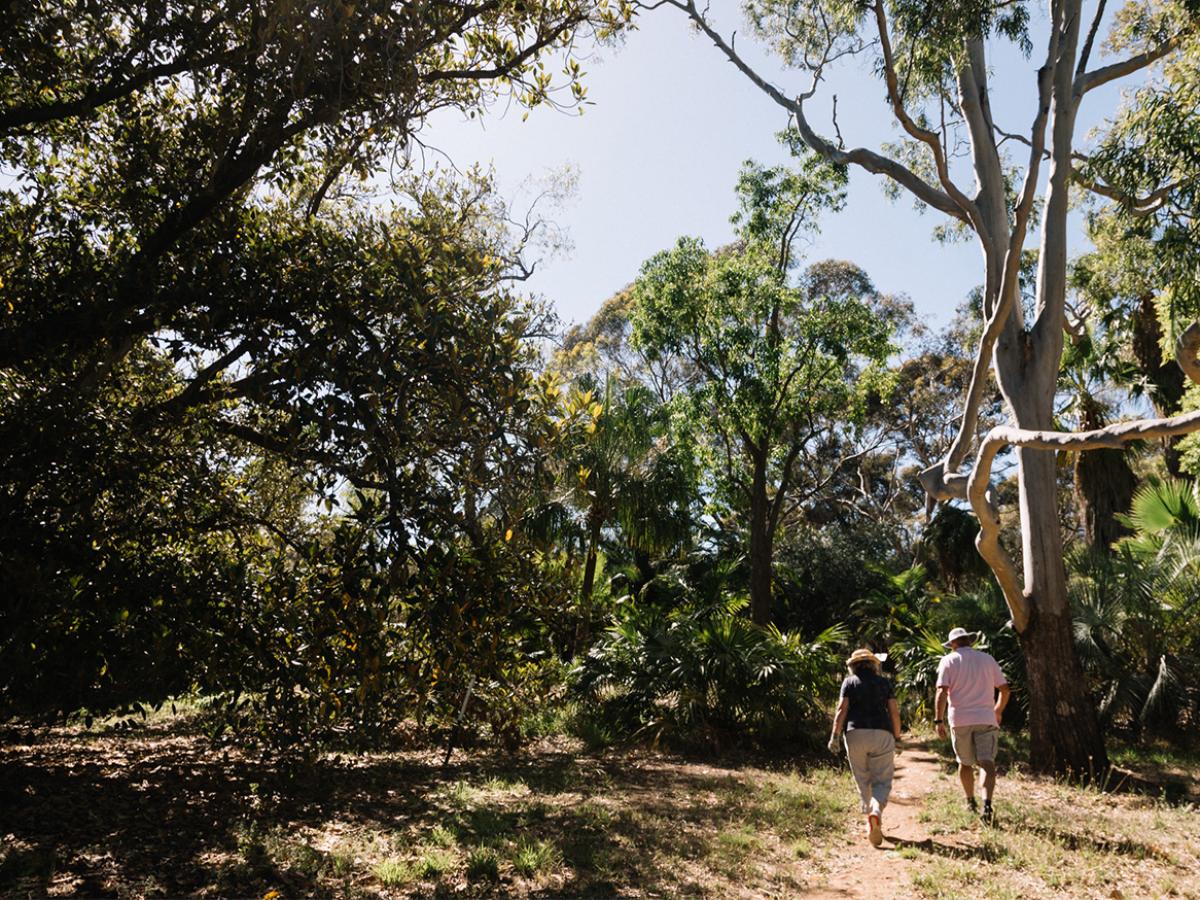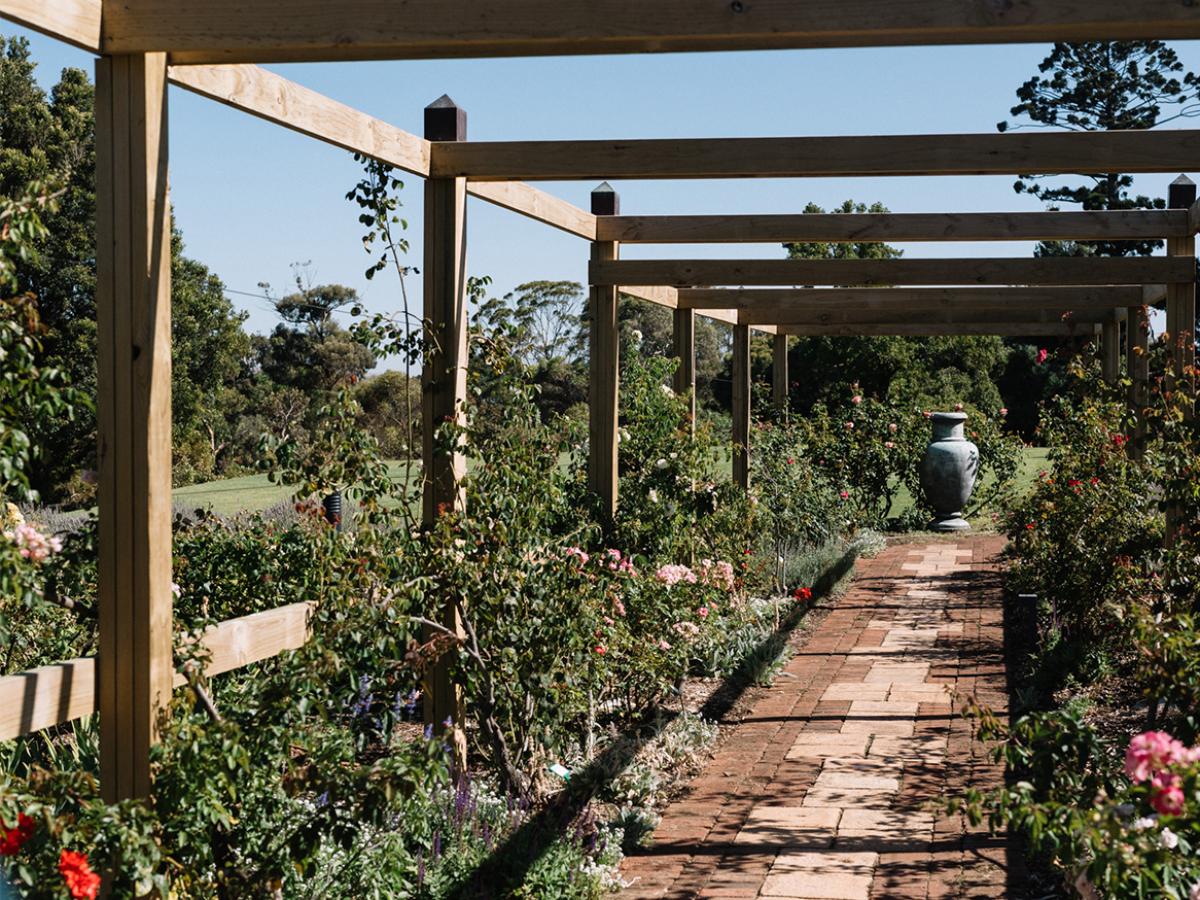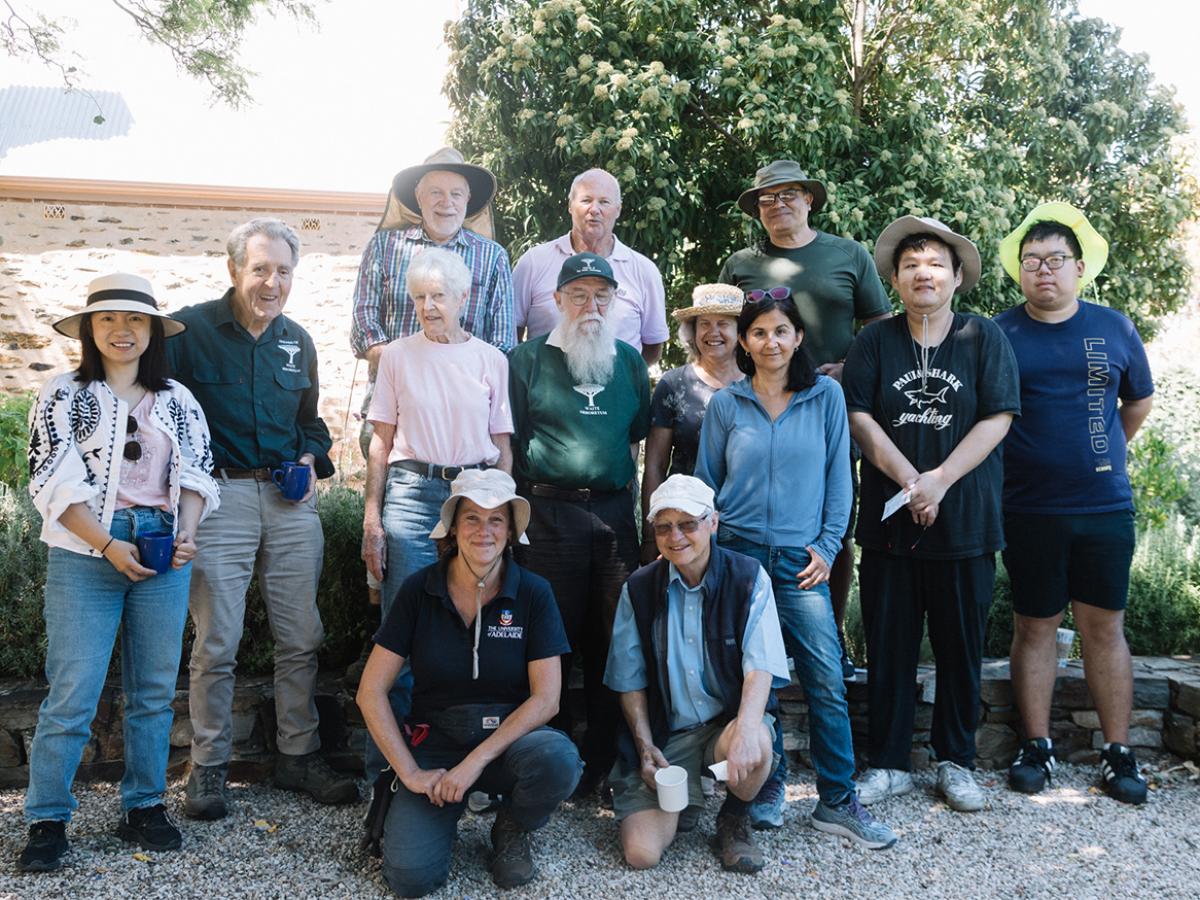Gardens of Note
The Waite Arboretum, Urrbrae House gardens and the Waite Conservation Reserve are made of many impressive parts.

In 2009, in collaboration with the SA Branch of the Mediterranean Garden Society, the Garden of Discovery was planted with native plants suited to the soil and climate. Designed with pathways, soundscapes, outdoor books and interpretive signage, the Garden of Discovery highlights some of the internationally significant achievements of South Australian scientists in environmental and agricultural science at the Waite campus. The thematic garden rooms evoke the history of Peter Waite and the scientific achievements of the campus. Volunteers tend the garden and plant the annual historic wheat display.
One of a series of thematic gardens in the Urrbrae House Historic Precinct Gardens, the Sensory Garden stimulates different senses and is designed to incorporate plants with captivating colours, textures, aromas and tastes. Within this garden are exciting artworks and plantings which provide a tranquil, informative, humorous and stimulating recreational space for everyone, particularly those with disabilities. It is a haven for birds and butterflies and offers a kaleidoscope of colours, aromas and textures.
The Arboretum has two main palm collections. The first collection was established in 1928 and features a handsome Chilean wine palm Jubaea chilensis, several jelly palms Butia capitata and many other species of interest. The second collection was established along the watercourse in 1994 with donations from the Palm and Cycad Society (S.A.) and is interspersed with cycads. The collection consists of more than 300 palm specimens from 33 genera, and over 70 cycad plants from seven genera and 43 specimens. Visitors can take note of which varieties could be grown in home gardens of South Australia under harsh conditions.

The Waite Conservation Reserve is noted as one of the largest and best surviving examples of Grey Box Grassy Woodland in South Australia. It is home to more than 200 species of native plants as well as kangaroos, koalas and echidnas. The three marked trails within the Reserve – the Loop Trail, the Sheoak Loop Trail and part of the extensive Yurrebilla Trail – are popular with walkers, hikers and ramblers, providing an invigorating nature experience with (shh!) the best views in Adelaide, a mere six kilometres from the CBD.
A splendid avenue of 68 English elms, dating back to 1928, frames the estate, guiding the view westwards to the distant Gulf St Vincent. The picturesque avenue is equally beautiful when viewed from the opposite end, where it sweeps upwards from Fullarton Road to the Waite Main Building. The trees put on a spectacular show during autumn and display a flush of bright green leaves in spring. One can easily imagine its location being prized for a post-prandial amble on a Sunday afternoon.

The Bee, Butterfly and Bird Garden
The BB&B Garden is an organic corridor covering 300 square metres and is home to more than 700 plants of more than 40 different local species. It has a selection of small shrubs, herbaceous grasses and groundcovers flowering and fruiting at different times of the year. The plants are local species that naturally occur in the Mount Lofty area with similar soil conditions and rainfall requirements. These plants, trees and other structures are close to a watercourse and attract a range of birds, butterflies, bees, reptiles, frogs, possums, ants, beetles and other insects. As well as boosting biodiversity and providing a resource for student research projects, the BB&B Garden aims to inspire the community to copy the initiative.
The Native Bee Hotel is open for bee-z-ness in the Mallee section of the Arboretum. Built by volunteers, the woody ‘hotel’ is a hive of activity with its many hollows and cavities prized by the native bees that reside in the Arboretum. The multi-purpose facility provides around 80 species of native bees with shelter from the weather and a safe place for them to hatch, with its residents settling the bill by boosting pollination in our gardens.
North-west Corner
The Arboretum’s north-west corner is home to many species common to the Adelaide foothills and original Grey Box woodland. The site, which has been maintained by volunteers for more than 15 years, provides an excellent example of revegetation and regeneration in an urbanised environment. The aim is to recreate elements of the original Grey Box grassy woodland and understory that covered the Adelaide Plains before European settlement.

The Arboretum’s Bird Garden is a multi-layered vegetation habitat garden, consisting of dense clumps of shrub specimens, strips of native grasses and groundcovers. It was created to attract smaller birds and encourage them to adopt the site as a refuge. Dense foliage plants extend from the ground up to three metres and higher. Current avian visitors to the garden feed early in the morning and seek shade during the warmest part of the day, and the prickly-foliage plants provide protection from predators like larger birds and cats, and act as nesting sites.
The Twentieth Century and Heritage Rose Garden
The Rose Garden has undergone many iterations over the decades, but still showcases many of the original features, such as a splendid rose arbour. The formal layout of the southern end contains rare varieties, most of which are no longer commercially available and were sourced from England, America and New Zealand. The opposite end features different varieties in a more informal, contemporary design. Roses are in full bloom from September until May. Visitors can also view the Armillary Sphere Sundial, designed and made specifically for the location by physicists Margaret Folkard and John Ward of Sundials Australia and funded by private donations.
Written by Simon Behenna
Photography by Thomas McCammon
